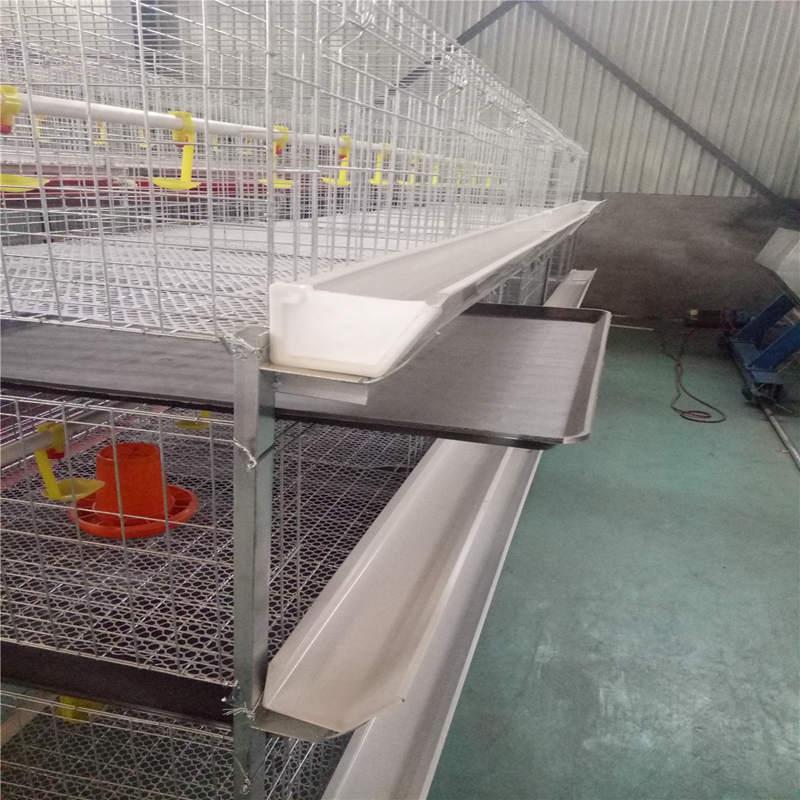Exploring the Benefits and Innovations in Broiler Chicken Farming with Modern Cage Systems
Aug . 10, 2024 09:50 Back to list
Exploring the Benefits and Innovations in Broiler Chicken Farming with Modern Cage Systems
The Role of Poultry Broiler Cages in Modern Chicken Farming
Poultry farming, particularly broiler production, has seen significant advancements in recent decades, largely driven by the demand for affordable and efficient sources of protein. One crucial development in this industry is the use of specialized cages for broiler chickens. These cages, designed to house birds in a controlled environment, play an essential role in enhancing productivity while addressing welfare and health concerns.
Broiler chickens are raised primarily for meat production, and their rapid growth rates make them a popular choice for poultry farmers. Traditional methods of raising broilers often involved extensive free-range systems or floor-based housing. However, with the rising demand for chicken meat, these systems faced challenges concerning space, disease management, and feed efficiency. Cages have emerged as a solution to these issues, offering numerous advantages.
One of the primary benefits of using broiler cages is the improved disease control they provide. In traditional systems, birds are often in close proximity, increasing the likelihood of disease transmission. Caging systems, however, can help reduce this risk by isolating individual birds or smaller groups, thereby limiting the spread of pathogens. By controlling the environment better, farmers can implement biosecurity measures that protect their flocks and ensure a healthier production cycle.
poultry broiler cage

Moreover, broiler cages enhance feed efficiency, a critical factor for profitability in poultry farming. Birds in caged systems can be monitored more closely, allowing for precise adjustments to their diet and feeding schedules. This targeted nutrition can lead to faster weight gain and more efficient feed conversion rates compared to traditional floor systems. As farmers strive to reduce costs and maximize output, the ability to optimize feeding becomes increasingly important.
In addition to health and efficiency benefits, poultry broiler cages can contribute to improved animal welfare, provided they are designed with the birds' needs in mind. Modern cages are built to accommodate the natural behaviors of chickens, such as perching and nesting. By ensuring that broilers have enough space and environmental enrichment, farmers can reduce stress levels among the birds. This, in turn, leads to better overall health and productivity, contributing to the sustainability of poultry farming practices.
However, the use of cages in broiler farming is not without its critics. Animal welfare advocates often argue that even the best-designed cages restrict natural behaviors and movement, which is essential for the well-being of the birds. This ongoing debate has prompted many farmers to explore alternative housing systems and improve cage designs to meet both production goals and animal welfare standards. Innovations such as enriched cages, which provide more space and features for chickens to engage in natural behaviors, are becoming more prevalent.
In conclusion, poultry broiler cages represent a significant development in the quest for efficient and sustainable meat production. By offering benefits in disease control, feed efficiency, and potential welfare improvements, these systems play a vital role in modern chicken farming. Nonetheless, as the industry continues to evolve, it is crucial for farmers to balance productivity with ethical considerations, ensuring that the welfare of the birds is not compromised in the pursuit of efficiency. The future of poultry farming lies in innovative approaches that enhance animal well-being while meeting the growing global demand for chicken meat.
-
Automatic Feeding Line System-Pan Feeder Nipple Drinker|Anping County Yize Metal Products Co., Ltd.
NewsJul.29,2025
-
Hot Sale 24 & 18 Door Rabbit Cages - Premium Breeding Solutions
NewsJul.25,2025
-
Automatic Feeding Line System Pan Feeder Nipple Drinker - Anping County Yize Metal Products Co., Ltd.
NewsJul.21,2025
-
Automatic Feeding Line System Pan Feeder Nipple Drinker - Anping County Yize Metal Products Co., Ltd.
NewsJul.21,2025
-
Automatic Feeding Line System - Anping Yize | Precision & Nipple
NewsJul.21,2025
-
Automatic Feeding Line System - Anping Yize | Precision & Nipple
NewsJul.21,2025






